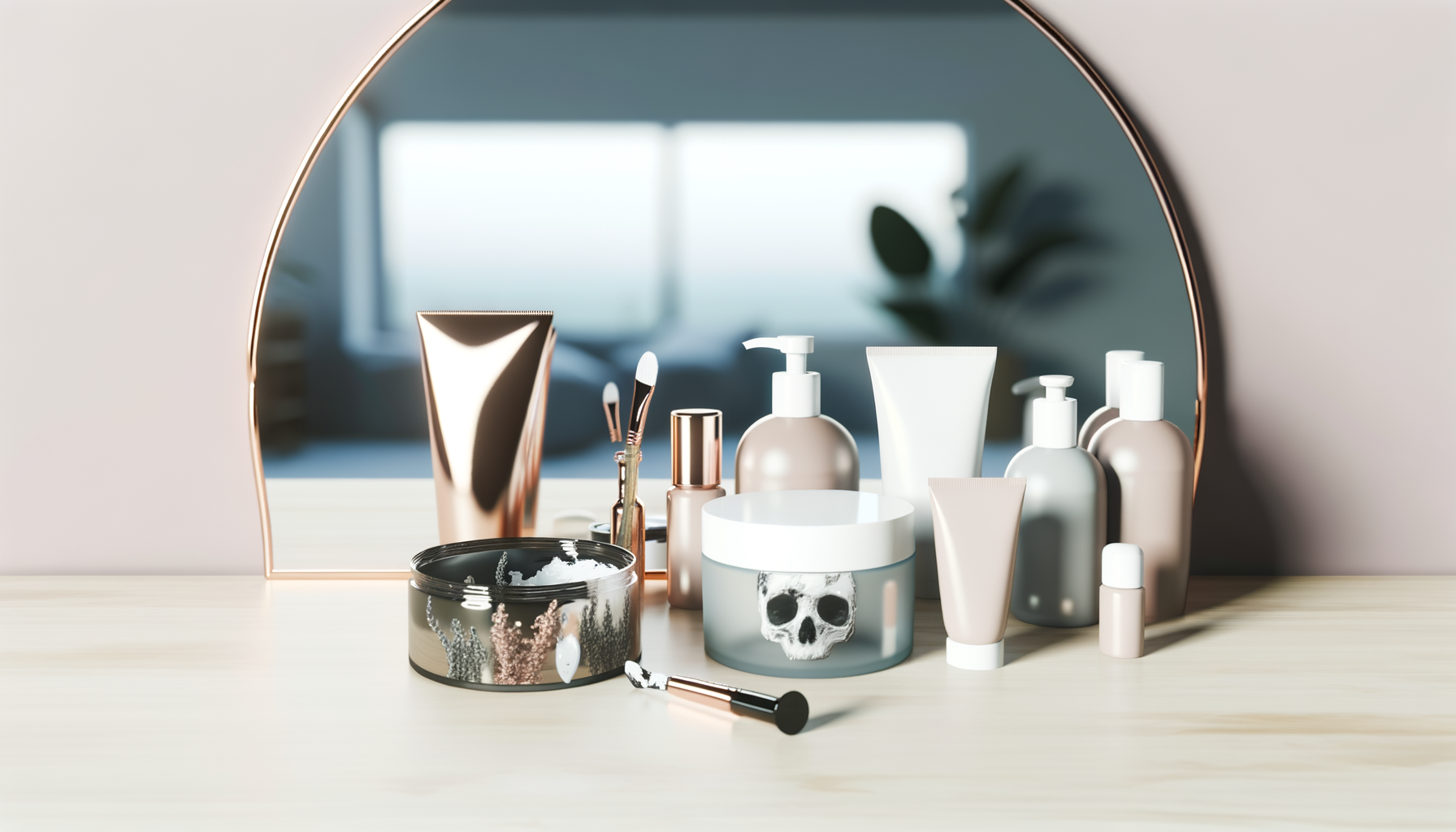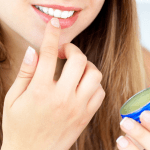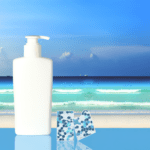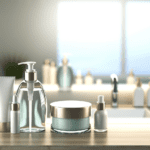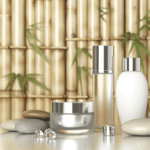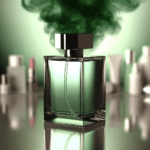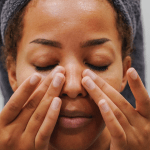Introduction to Skincare and Parabens
Understanding Skincare Routines
Skincare routines are fundamental to maintaining healthy, vibrant skin. They typically involve a series of steps such as cleansing, toning, moisturizing, and applying sunscreen, each designed to address specific skin needs and concerns. The products used in these routines often contain a variety of ingredients, some of which are designed to preserve the product’s integrity and extend its shelf life. One such class of ingredients is parabens, which have become a topic of concern for health-conscious consumers.
What are Parabens?
Parabens are a group of synthetic chemicals widely used as preservatives in the cosmetic and skincare industries. Their primary function is to prevent the growth of harmful bacteria, mold, and yeast in products, ensuring their safety and longevity. Parabens are effective due to their ability to suppress microbiological growth, and they are cost-effective for manufacturers as they work well at low concentrations.
Prevalence of Parabens in Skincare Products
Since their introduction in the 1950s, parabens have been incorporated into a vast array of beauty and personal care products. They are found in lotions, creams, shampoos, makeup, and more. Despite their widespread use, the presence of parabens has raised concerns among consumers and researchers alike, leading to increased scrutiny of their safety and a growing demand for paraben-free alternatives.
Purpose of the Article
The purpose of this article is to delve into the hidden dangers of parabens in skincare routines. We aim to provide a comprehensive understanding of what parabens are, their prevalence in skincare products, and the potential health risks they pose. By examining scientific evidence and exploring the environmental impact of parabens, this article seeks to empower consumers with knowledge, enabling them to make informed decisions about the products they use on their skin.

Do you have the most commonly used but toxic, disease bringing chemicals in your skin care? Many chemicals in skincare are hormone disruptors and make menopause symptoms worse.
Find out more…
The Science Behind Parabens
Chemical Structure and Properties
Parabens are a group of synthetic compounds known as parahydroxybenzoates. They are esters formed from parahydroxybenzoic acid (PHBA), which is naturally found in some fruits. Structurally, parabens are characterized by a hydroxybenzoic acid core with varying alkyl groups attached to the hydroxyl group, which can include methyl, ethyl, propyl, and butyl groups. This variation in alkyl groups affects their hydrophobicity and, consequently, their ability to penetrate the skin and interact with microbial cells. The chemical properties of parabens, such as their low molecular weight and lipophilic nature, make them effective at traversing cell membranes and providing preservative action.
How Parabens Preserve Products
Parabens are valued in skincare for their antimicrobial properties, which help prevent the growth of bacteria, fungi, and yeast in products, especially those with high water content. They are effective at very low concentrations, typically between 0.01% and 0.3%. Parabens work by disrupting the normal metabolic processes of microorganisms, inhibiting their growth and reproduction. This preservation extends the shelf life of products and ensures they remain safe for use over time. The broad-spectrum efficacy of parabens against a range of microbes contributes to their widespread use in various personal care products.
Routes of Exposure to Parabens
Exposure to parabens can occur through several routes, the most common being dermal absorption when using skincare and cosmetic products. Parabens can penetrate the skin barrier, especially when applied to areas with higher permeability or damaged skin. Other exposure routes include ingestion of food products containing parabens and inhalation of aerosolized particles from sprays and fragrances. Once absorbed, parabens can be metabolized and excreted, but concerns arise from their potential accumulation in the body over time and the possible health risks associated with prolonged exposure.
Understanding the science behind parabens is crucial for consumers to make informed decisions about their skincare routines. While parabens are effective preservatives, their potential impact on health and the environment has led to increased scrutiny and a growing demand for paraben-free alternatives.

Popular Read: Endocrine Disruptors in Skincare: What You Need to Know
Potential Health Risks of Parabens
Endocrine Disruption and Hormonal Imbalance
One of the most concerning health risks associated with parabens is their potential to disrupt the endocrine system. Parabens can mimic estrogen, a primary female sex hormone, and interfere with hormone function. This mimicry can lead to hormonal imbalances and potentially contribute to reproductive issues, including fertility problems. Studies have indicated that parabens can affect the expression of genes regulated by estrogen, as well as the function of estrogen receptors themselves.
Links to Breast Cancer
Research has raised red flags regarding the connection between parabens and breast cancer. Parabens have been detected in human breast tumors, suggesting that these chemicals may penetrate the skin and remain within bodily tissues. While the presence of parabens in breast tissue does not confirm causation, it does warrant concern over their potential role in breast cancer development. The fact that parabens can act like estrogen is particularly troubling, as estrogen exposure is a known risk factor for breast cancer.
Impact on Aging and Menopause
Parabens may also play a role in the aging process and the onset of menopause. By disrupting hormone levels, parabens could potentially influence the timing of menopause and exacerbate symptoms such as hot flashes and bone density loss. Additionally, the skin’s exposure to parabens may contribute to premature aging, as these chemicals can harm skin cells and reduce the skin’s natural ability to protect against environmental stressors.
Other Health Concerns
Beyond the risks to the endocrine system and potential links to cancer, parabens are associated with other health concerns. These include:
- Allergic reactions: Parabens can cause skin sensitivities and allergies, particularly with repeated exposure.
- Reproductive toxicity: Some studies suggest that parabens may affect reproductive health, including sperm quality and testosterone levels in males.
- Developmental issues: There is concern that exposure to parabens, especially during critical periods of development, could have long-term effects on health and development.
While the percentage of parabens in individual products may be small, the cumulative exposure from multiple products can be significant. This is particularly concerning given the widespread use of parabens in personal care products.
In conclusion, while the full extent of the health risks associated with parabens is still being researched, the evidence to date suggests that these chemicals may have more insidious effects on our health than previously thought. As such, many consumers and health professionals advocate for caution and, where possible, the selection of paraben-free products.
Parabens and the Environment
Environmental Persistence of Parabens
Parabens are a group of synthetic compounds widely used as preservatives in the cosmetics industry. Their environmental persistence is a growing concern due to their ability to withstand natural degradation processes. Once parabens enter the environment, typically through wastewater systems, they can persist for extended periods. Studies have detected parabens in various environmental matrices, including river water, sediments, and even drinking water sources. The resistance of parabens to biodegradation contributes to their accumulation in the ecosystem, raising questions about their long-term environmental impact.
Effects on Wildlife
The presence of parabens in the environment can have detrimental effects on wildlife. Aquatic organisms are particularly vulnerable, as they are directly exposed to contaminated water bodies. Research has shown that parabens can act as endocrine disruptors, interfering with the hormonal systems of various species. This disruption can lead to reproductive issues, developmental abnormalities, and altered behavior patterns in fish and amphibians. The bioaccumulation of parabens in the food chain further exacerbates these risks, potentially affecting a wide range of species and disrupting ecological balances.
The Broader Ecological Impact
The broader ecological impact of parabens extends beyond direct toxicity to wildlife. As endocrine-disrupting chemicals, parabens can influence the growth and health of plants and microorganisms, which play critical roles in ecosystem functions such as nutrient cycling and soil fertility. Additionally, the interaction of parabens with other environmental pollutants may result in additive or synergistic effects, complicating the assessment of their overall ecological footprint. The potential for long-range environmental transport of parabens also means that remote areas are not immune to their influence, highlighting the need for a global perspective on the management of these persistent chemicals.
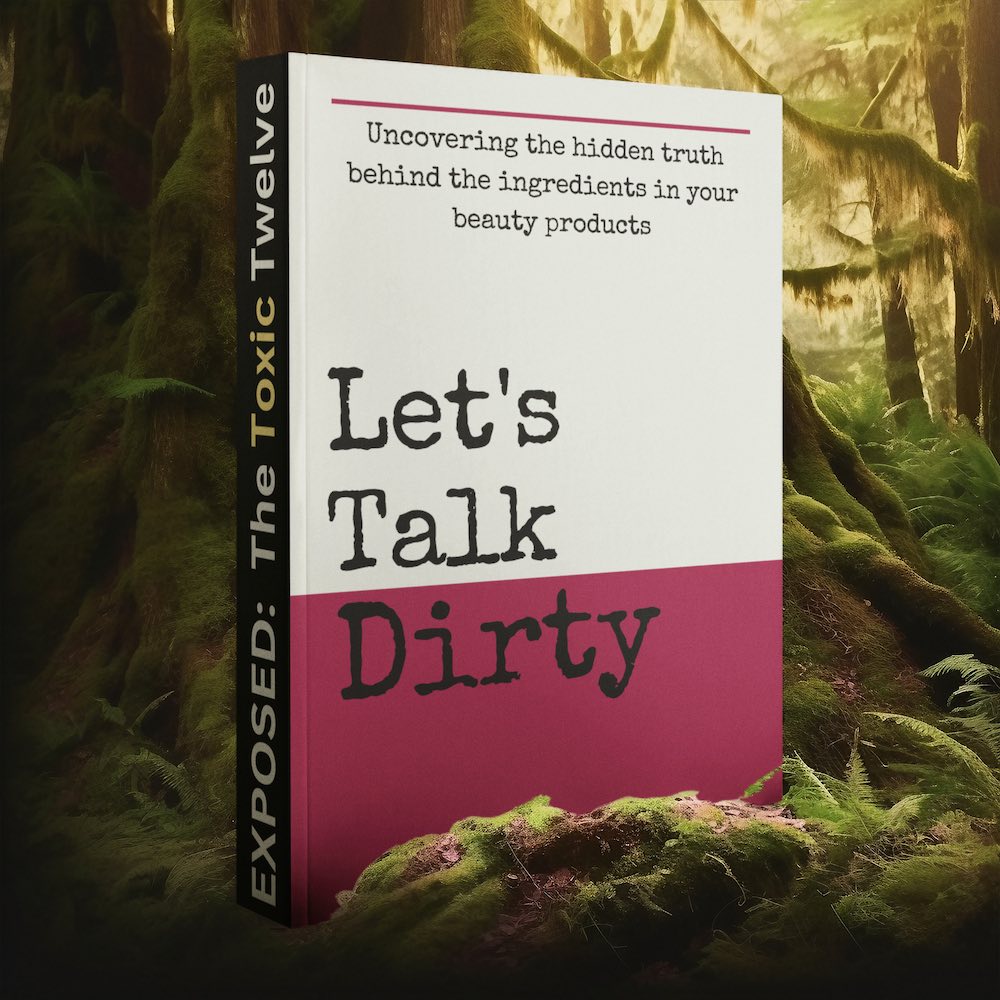
Feeling You Have a Right to Safe Beauty & Fem Care?
If so, it may be time for a change. It starts with knowledge. We have a few suggestions in our new guides.
Identifying Parabens in Your Products
Reading and Understanding Labels
When it comes to skincare, the adage “knowledge is power” rings especially true. Understanding the ingredients in your products is crucial for maintaining healthy skin and avoiding potential risks. Parabens, a common preservative, can be identified by reading product labels carefully. Look for ingredients ending in “-paraben,” such as methylparaben, propylparaben, butylparaben, and ethylparaben. These are the most prevalent parabens used in cosmetics. Remember, the order of ingredients matters; they are listed from highest to lowest concentration. While parabens are typically used in small amounts, their cumulative effect from multiple products can be a concern.
Common Paraben Compounds in Skincare
- Methylparaben – Widely used for its antifungal and preservative properties.
- Propylparaben – Commonly found in creams, lotions, and shampoos.
- Butylparaben – Often used in combination with other parabens for a more effective preservative system.
- Isobutylparaben – Similar to butylparaben and used for its antimicrobial qualities.
- Isopropylparaben – Used in a variety of cosmetics for its ability to prevent microbial growth.
- Ethylparaben – Known for its low toxicity and used in a wide range of beauty products.
These compounds can be found in everything from facial cleansers to sunscreens, making it essential to scrutinize labels if you’re aiming to avoid them.
Misleading Marketing Practices
While many brands have responded to consumer concerns by formulating paraben-free products, it’s important to be wary of misleading marketing practices. Phrases like “natural” or “organic” do not necessarily mean a product is free of parabens or other synthetic preservatives. Additionally, some products may boast being “free of synthetic parabens,” which can be deceptive as it implies the presence of natural parabens, which may carry similar risks. To ensure you’re making safe choices, look for certifications such as USDA Organic or Cruelty-Free, and utilize resources like the Environmental Working Group’s (EWG) Skin Deep Database to verify product safety ratings. Always approach claims with a critical eye and conduct your own research to validate the safety of the skincare products you choose.
Alternatives to Paraben-Containing Skincare
Natural Preservatives
As awareness of the potential risks associated with parabens grows, many consumers are turning to skincare products that use natural and organic preservatives. These alternatives include substances like rosemary extract, vitamin E (tocopherol), and radish root ferment filtrate, which offer antimicrobial properties without the controversial side effects associated with parabens. Other natural preservatives such as grapefruit seed extract and fermented radish root are also gaining popularity for their ability to extend the shelf life of products while being gentle on the skin.
Paraben-Free Product Recommendations
For those looking to avoid parabens, when shopping for paraben-free products, look for labels that clearly state “paraben-free” and check the ingredient list for common paraben compounds such as methylparaben, propylparaben, and butylparaben.
However, given that the health risks associated with chemical preservatives go far beyond just parabens, it is best to stay clear of chemicals and switch to all-natural products. They can be easily identified:
Search for products that do not include water (aqua, eau, juice) in their list of ingredients, as the presence of water in a product typically implies the inclusion of preservatives, which are chemicals.
Damiva’s skincare line is water-free and patented, offering products that are free from chemicals and safe for long-term use.
Tips for a Chemical-Free Skincare Routine
Creating a chemical-free skincare routine involves more than just avoiding parabens. Here are some tips to help you make safer choices:
- Read Labels Carefully: Familiarize yourself with the names of common chemical preservatives and actively look for their absence in product labels.
- Patch Test New Products: Even natural ingredients can cause reactions in sensitive individuals. Always perform a patch test before fully incorporating a new product into your routine.
- Consult Professionals: Dermatologists and skincare experts can provide personalized advice on which chemical-free products are best for your skin type and concerns.
- Embrace Simplicity: Sometimes, less is more. Simple formulations with fewer ingredients are less likely to cause irritation and are often gentler on the skin.
- Support Transparent Brands: Choose to buy from brands that are open about their ingredient sourcing and manufacturing processes.
- Stay Informed: The skincare industry is constantly evolving. Keep up-to-date with the latest research and product releases to ensure you’re using the safest options available.
- Use only products that don’t list water (aqua, eau, juice) in the ingredient list: because when a product contains water, it contains preservatives (chemicals).
By taking these steps, you can minimize your exposure to parabens and other unwanted chemicals, leading to a healthier skincare routine and overall well-being.
Do you know the 3 main ways how your body is exposed to harmful chemicals, which affect your hormones, your thyroid, health and beauty?
If not, it may be time to learn about them. It takes about 1-2 minutes.
We have a few suggestions how to avoid these silent health and immune system killers in our new guide.
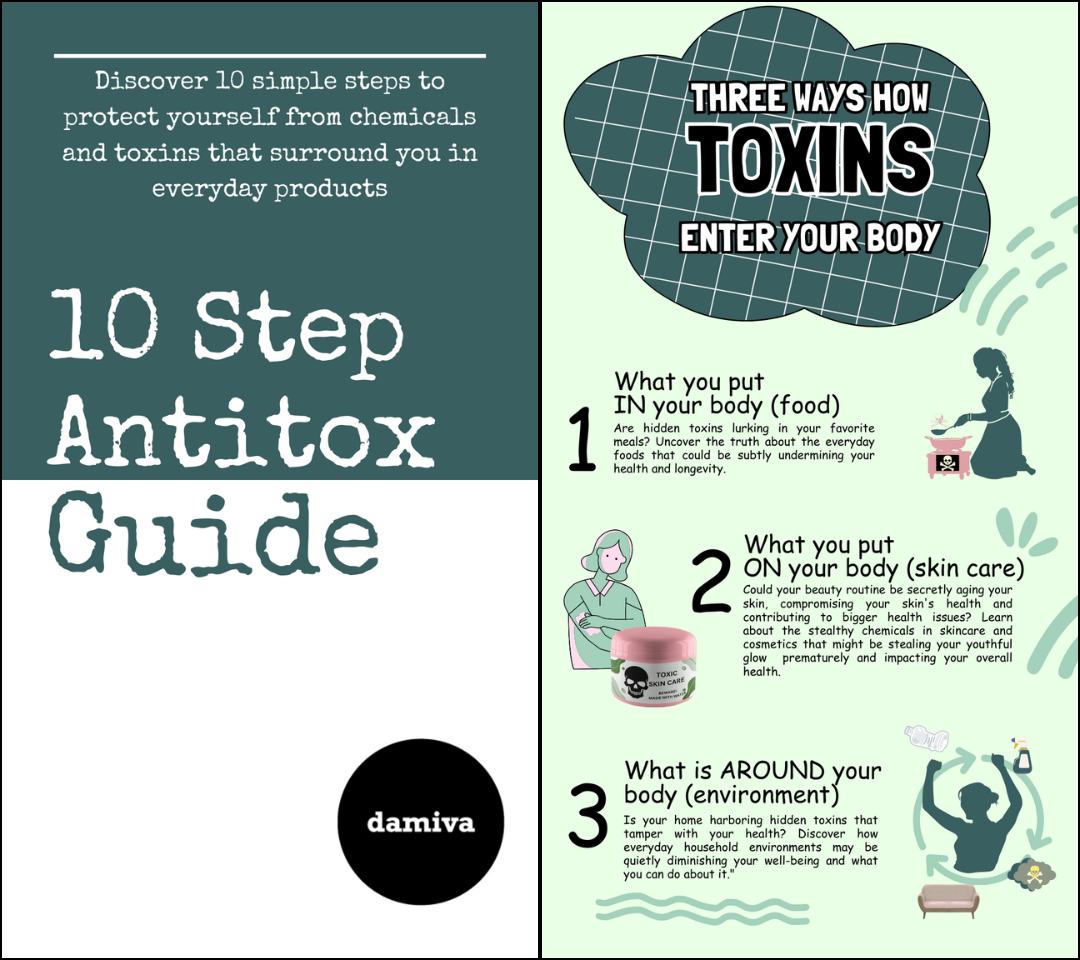
Conclusion: Empowering Choices for Health-Conscious Consumers
Summarizing the Risks and Alternatives
Throughout this article, we have unveiled the hidden dangers of parabens in skincare products, highlighting their potential to disrupt endocrine function, contribute to breast cancer, and impact the environment. The science is clear: parabens, while effective as preservatives, carry risks that are too significant to ignore. Fortunately, the rise of health-conscious consumerism has given way to safer alternatives. By opting for products with natural preservatives and avoiding those with misleading labels, consumers can protect their health and contribute to a more sustainable world.
Taking Control of Your Skincare and Health
Empowerment in skincare comes from knowledge and the willingness to make informed choices. It’s about taking control of what we apply to our bodies and understanding the long-term implications of these decisions. Embrace paraben-free products and those with transparent ingredient lists. Remember, your skin absorbs what you put on it, and by choosing chemical-free options, you are taking a stand for your health. It’s not just about beauty; it’s about well-being.
Encouragement for Continued Education and Advocacy
As we conclude, let us not forget the importance of continued education and advocacy. Stay informed about the latest research on skincare ingredients and share this knowledge within your community. Support brands and initiatives that prioritize consumer health and environmental sustainability. Together, we can drive change in the beauty industry, demanding products that are safe for both people and the planet. Let this article serve as a stepping stone towards a more informed and health-conscious approach to skincare.
Remember, the choices you make today will shape your health and the environment tomorrow. Choose wisely, advocate passionately, and educate continuously. Your skin, your health, and the earth will thank you.
